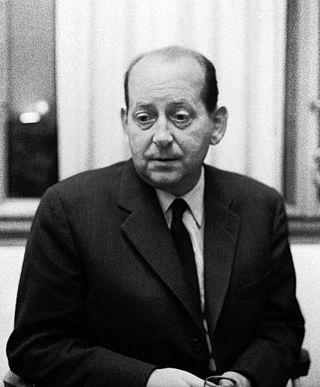
Eduard Tubin was an Estonian composer, conductor, and choreographer.
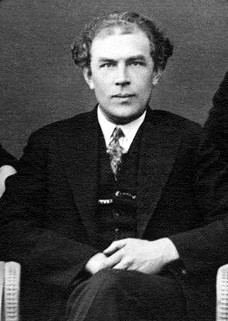
Heino Eller was an Estonian composer and pedagogue, known as the founder of contemporary Estonian symphonic music.

Vanemuine is a theatre in Tartu, Estonia. It is the first Estonian-language theatre. Stemming from the Vanemuine Society (1865), the theatre's first performance was Lydia Koidula's Saaremaa Onupoeg at the society's fifth anniversary. In subsequent years, Vanemuine has expanded to include a symphony orchestra and ballet company, while its repertoire has included a range of operettas and music theatre through operas and dramas. Under Karl Menning, the theatre served a vocational purpose, with a great emphasis on educating future talent. Subsequent directors prioritized entertainment value, while Kaarel Ird—who led Vanemuine for more than forty years—oversaw a blend of genres as well as tours of the Soviet Union. In recent years, content has varied extensively.
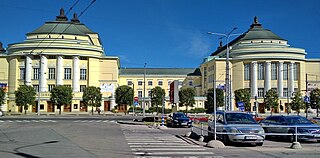
Estonian National Opera is the national opera company of Estonia. The company is based at the Estonia Theatre in Tallinn. The theatre has had several names throughout its existence. The latest one being "The Estonian National Opera", which was adopted in 1998. The company produces a lively and varied season which includes operas, ballets and operettas/musicals with over 500 people currently working at the Estonian National Opera.

Kratt, is a magical creature in old Estonian mythology, a treasure-bearer.
Avo Sõmer is an American musicologist, music theorist, and composer, of Estonian birth.

Estonia Theatre is an historic landmark building in central Tallinn, the capital city of Estonia. It houses the Estonian National Opera and the Estonian National Symphony Orchestra.

Eri Klas was an Estonian conductor.
Veronika Valk is an Estonian architect.

Alatskivi Castle is a neo-Gothic castle in Alatskivi, Estonia. Dating to the 17th century, it is situated in Peipsiääre Parish, Tartu County. It was rebuilt in the late 19th century by Baron Arved von Nolcken, modeled on the royal residence of Balmoral in Scotland. A renovation occurred between 2005 and 2011. Five rooms on the first floor house the Eduard Tubin museum, which documents his accomplishments as a music composer and conductor.
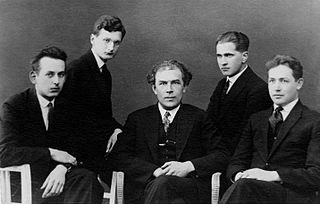
Karl Leichter was an Estonian musicologist. In 1929 he graduated in theory and composition, studying under Heino Eller with pupils such as Eduard Tubin, Alfred Karindi, Eduard Oja and Olav Roots. Between 1929 and 1931 he worked in the Estonian Folklore Archives.
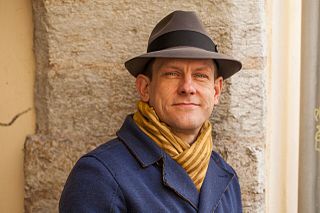
Jan Uuspõld is an Estonian stage, television, radio and film actor and musician.

Mari Lill is an Estonian stage, film and television actress whose career began onstage in the late 1960s.

Ivo Uukkivi is an Estonian stage, film, radio, and television actor, television producer and, under the nickname Munk, founder of and singer with the punk band Velikije Luki.

Joonatan Jürgenson is an Estonian classical pianist from Tõravere. He made his debut at the age of 12 after receiving the 1st prize at the "Young Musician" competition in Tallinn, 2004.
Barbara von Tisenhusen is an opera in three acts by Estonian composer Eduard Tubin. Tubin finished it in 1968. The libretto is by Jaan Kross who based on Aino Kallas' novel Barbara von Tisenhusen. The novel depicts events and human activities in 1551 in Tallinn.
Kratt is an Estonian magical creature.

Urve Tauts is an Estonian opera singer (mezzo-soprano).
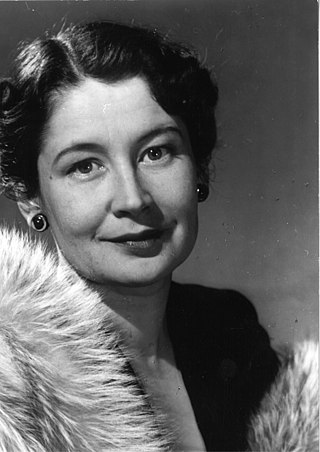
Erika Elfriede Elena Saarik was an Estonian dancer and stage actress.
Marika Eensalu is an Estonian opera singer (mezzo-soprano) and music pedagogue.















